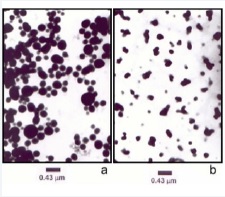Morphology-dependent Photophysical Properties of Poly-4-vinylpyridine Polymers Containing –Re(CO)3(N^N)+ Pendants
REVIEW
Abstract
We review the morphological and the photophysical properties of several inorganic polymers that can be prepared from poly-4- vinylpyridine (P4VP). These polymers contain –Re(CO)3(N^N)+ pendants attached to their backbone with α-diimine ligands (N^N) such as 2,2´-bipyridine (bpy), 1,10-phenanthroline (phen), 3,4,7,8-tetramethyl-1,10-phenanthroline (tmphen) and 5-nitro-1,10- phenanthroline (NO2-phen). These Re(I) polymers, show marked differences in their photophysical properties when compared to single [pyRe(CO)3(N^N)]+ molecules in diluted solutions. For example, Re→phen charge transfer excited states (MLCT) in the Re(I) polymers undergo a more efficient annihilation and/or secondary photolysis than in [pyRe(CO)3phen]+ complexes. Depending on solvent and/or cast film conditions, several aggregates of polymer strands with different morphologies were observed by transmission electron microscopy (TEM) and dynamic light scattering (DLS) techniques. Morphological changes derived from media-imposed changes (solvent, temperature) or from polymer backbone chemical modifications (protonation or peralkylation in P4VP uncoordinated pyridines) are responsible for the marked differences observed between the photophysical properties of these Re(I) polymers and those of the single pyRe(CO)3(N^N)+ molecules. Therefore, these Re(I) polymers can provide a good reaction scenario for other photochemical reactions. Thus, resonance energy transfer between –Re(CO)3(tmphen)+ and –Re(CO)3 (NO2-phen)+ pendants was observed in Re(I)-P4VP polymers containing both chromophores attached to their backbone. In addition, in the quenching of the MLCT luminescence of –Re(CO)3(N^N)+ pendants by amines, we observed a retardation of the molecular motion due to the restricted media that favored the observation of the Marcus inverted effect in bimolecular reactions due to the fact that low values of the solvent reorganization energies are achieved within aggregates.


